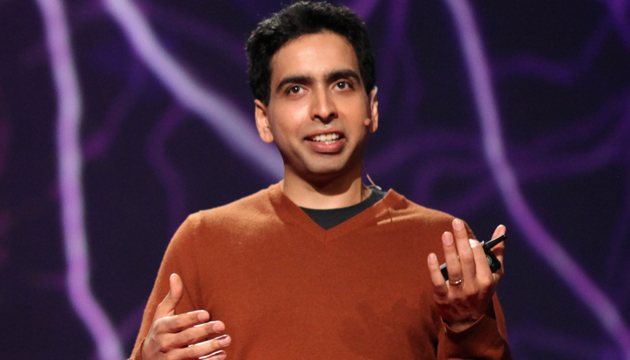Khan Academy: Changing America’s Education System


Will you do us the honor and join our team of authors?
To write for the SohoBlog, contact us at [email protected]
(Shakespearean prose not required.)

I recently watched an interview with Sal Khan on CBS’s “60 Minutes,” and I was truly inspired. Khan’s website, “Khan Academy,” provides students with thousands of educational videos in various subjects such as math, science, economics, etc.
Khan Academy is attempting to change the way those subjects are learned by students worldwide inside and outside the classroom. And with Bill Gates and Google at his side, Khan might be able to do just that.
According to Khan it all began when he agreed to long-distance tutor his cousin in algebra and ended up posting his tutorials on YouTube. His math videos gained popularity, and Khan, at that point an MIT- and Harvard-educated hedge fund manager, posted more videos in math and other subjects. It didn’t take much time until he started receiving positive feedback from parents and students using his video to enhance and better understand what was taught by their teachers in class. He quickly realized he was doing something good with his new tutoring “business” and decided to quit his job and start “Khan Academy” a not-for-profit organization that aims to provide a “free world-class education for anyone anywhere.”
In 2010 Bill Gates mentioned Khan’s videos at the Aspen Ideas Festival, telling the audience that his own kids were using Khan’s video for additional study aid. Soon after, Gates and Khan met and, with the financial support of Gates and Google, Khan’s videos took off. Today, 4 million students from all over the world visit the Khan Academy website each month. (Khan is currently working on translating them into 10 additional languages). The videos were also incorporated into the school program in selected schools in California. Since 2004, Khan Academy’s team has grown, but it remains a small operation of 30 professionals who focus on improving the quality and interface of their tutoring tool.
The way I see it, the Khan Academy product is unique for three main reasons. First, the videos are set up so the students don’t see Khan lecturing to them. The only visual image in the videos is Khan’s notes; it is as if Khan is sitting right next to them and explaining the material.
Second, Khan Academy is not trying to fill the role of the teacher in the students’ life. Schools that have implemented Khan’s videos in to the classroom use it as a tool that gives both teachers and students extra support. The children watch the video before class, so they are familiar with the subject when the teacher approaches it. This allows the teacher to invest more time in giving students one-on-one attention and focus on the things that are harder to understand.
Third, the team at Khan Academy created a tool that monitors real-time progress of each individual student. The “dashboard” helps school staff know which students are rushing ahead and which are falling behind. This tool helps teachers help their students because it visualizes individual and class performance and puts together data that is so hard to gather in a regular classroom setting.
Khan Academy has been criticized for trying to replace teachers and computerize America’s education system. I disagree with those critics. I believe that Khan Academy found a way to incorporate iPads and YouTube into the school system in a way that is fruitful and constructive. Sal Khan had a vision, and he went with it. Just like many entrepreneurs, he was able to change the world by making his vision a reality.
|
|
|